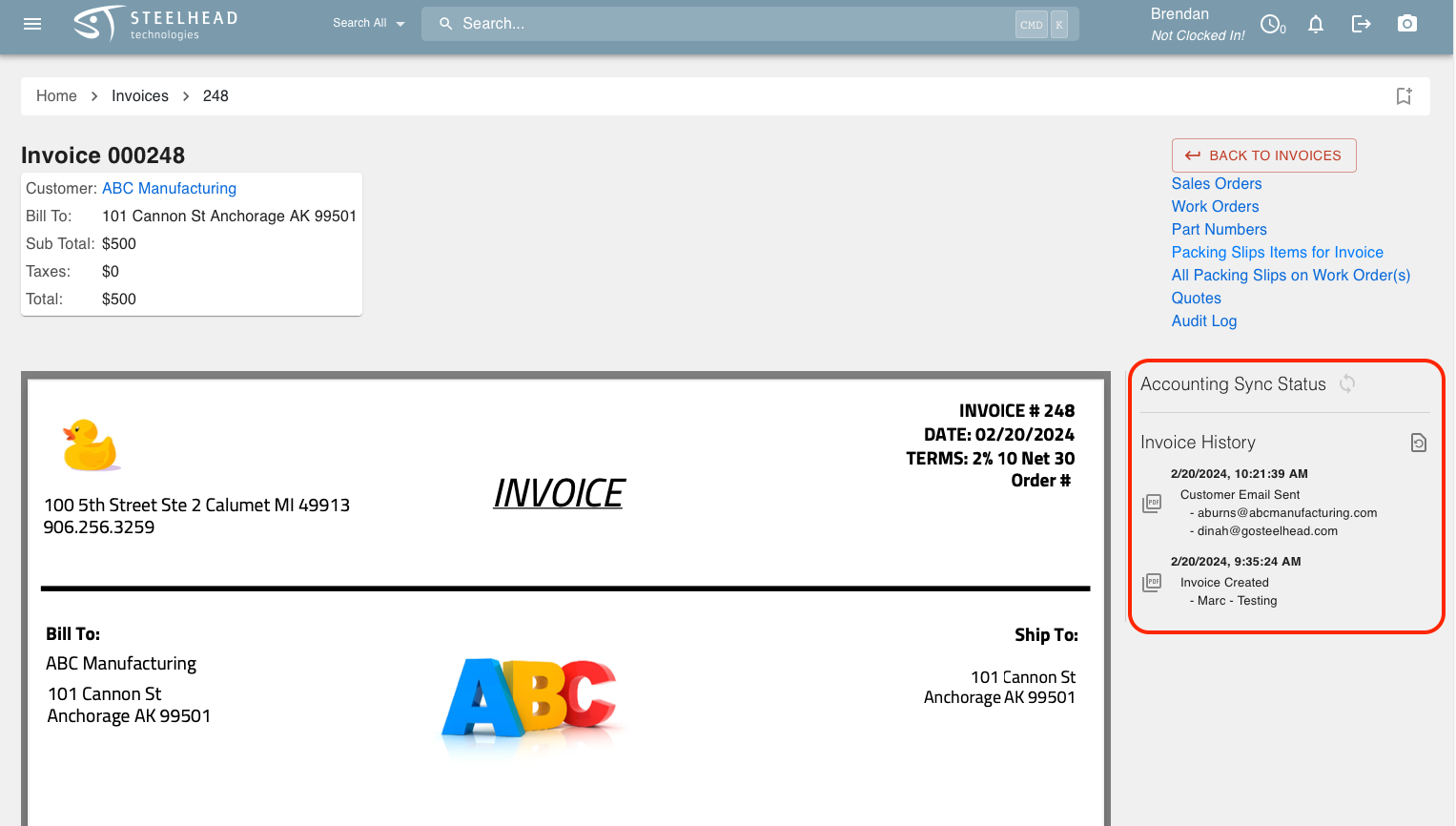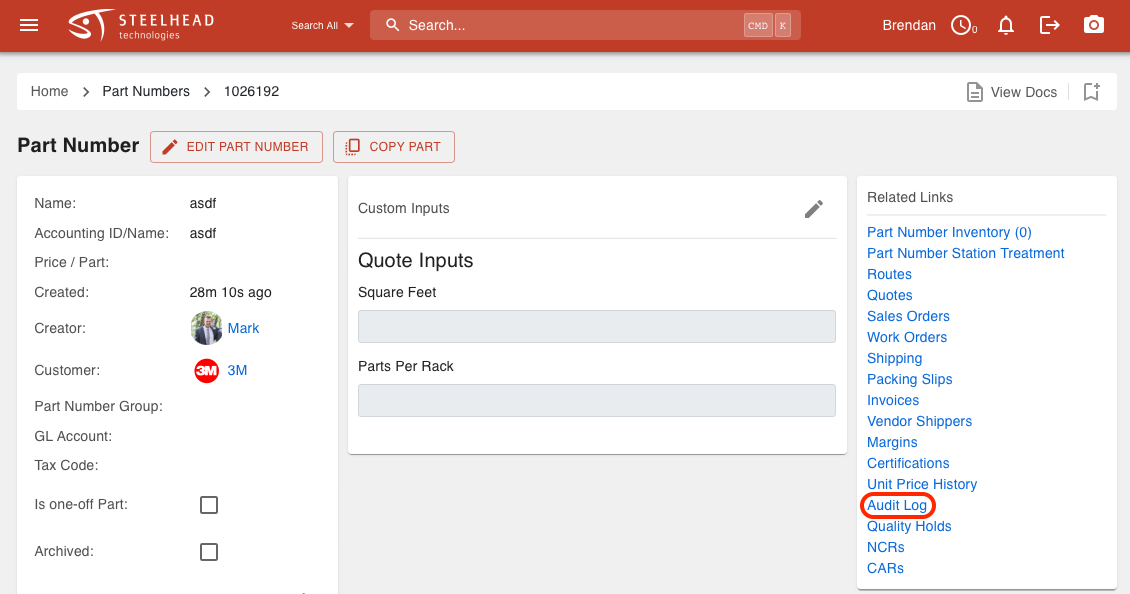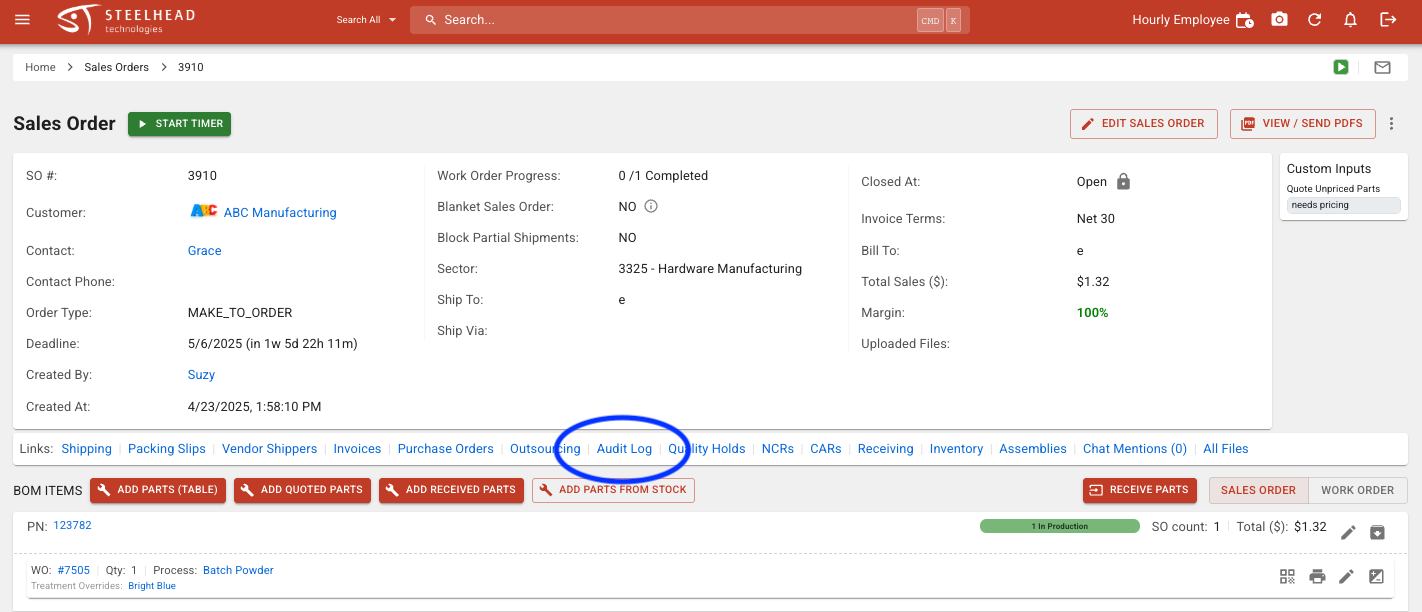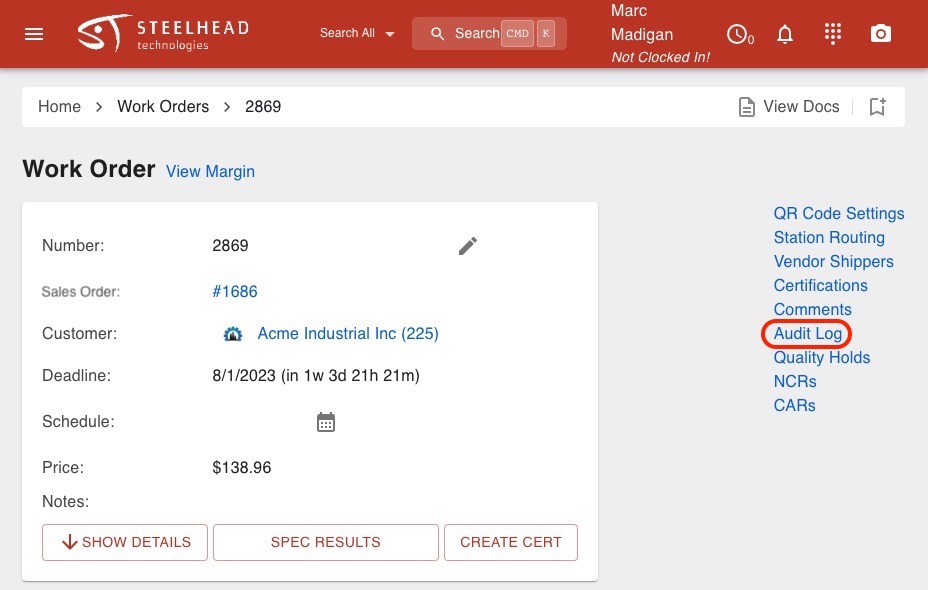- Print
Audit Logs
- Print
Audit Logs provide a history of activity in Steelhead per entity record (e.g., Work Order #2803). This history allows for traceability, accountability, review, and analysis.
The following Steelhead Features allow for the viewing of Audit Logs:
Bill Audit Logs
- Tracks changes to bills
- Shows modifications to bill details and status
- Accessible via bill detail pages
Invoice Audit Logs
- Tracks changes to invoices
- Shows modifications to invoice details, line items, and status
Invoice PDF History Logs
- Tracks when users view invoice PDFs
- Records viewer information and timestamps
- Accessible to invoice creators
Part Number Audit Logs
- Tracks changes to part numbers
- Shows modifications to part specifications and properties
Portal Request Access View Logs
- Tracks Portal access requests
- Records user information and access attempts
- Accessible to administrators
Purchase Order Audit Logs
- Tracks changes to purchase orders
- Shows modifications to PO details, items, and status
Work Order Audit Logs
- Tracks changes to work orders
- Shows modifications to work order details, status, and assignments
- Accessible via work order detail pages
User Audit Logs
- Tracks changes to User accounts
- Shows User account modifications, access changes, and profile updates
Most of these audit log modules provides:
- Timestamp of changes
- User who made the changes
- Type of operation (INSERT, UPDATE, DELETE)
- Before and after values for changes
- Filtering and sorting capabilities
- Access control based on User Permissions

Audit Log Columns
There are six data columns in most Audit Logs.
- ID: The Record Version for the item being audited. This provides a point-in-time reference for the item.
- AT: The date and time that the Record Version was created.
- USER: The user who performed the activity.
- TABLE: The database table that was adjusted when the activity took place.
- OPERATION: Describes the type of activity that occurred.
- DESCRIPTION: Provides details about what fields were inserted, updated, or deleted.
Audit Log Operation Types
There are three possible types of Audit Log operations.
- Insert: A new entry is added. This occurs when something is written for the first time. In many cases, when something is created, fields are set to NULL and are then updated when data are entered.
- Update: An existing entry is overwritten. This occurs when something is changed.
- Some fields, such as "archived_at", begin as NULL and are updated when a date and time of archiving is added.
- Delete An existing entry is deleted.
Audit Log Availability
Audit Logs are available on the following pages:
- Bills

**** * Parts Transfer Histories are also available for Work Orders - see Part Transfers Article.
Invoices

- Invoice Histories are also available on the Invoicing Page. Invoice History provides information on syncs to accounting softwares, Invoice sync error information, and email / deliverability history.

- Invoice Histories are also available on the Invoicing Page. Invoice History provides information on syncs to accounting softwares, Invoice sync error information, and email / deliverability history.
Part Numbers

Portal Request Access View Logs
- Click Portal User Requests in the left side menu of the Customers Dashboard to view Customer Portal User access requests:

- Purchase Orders
- To view a Purchase Order Audit Log, first click RELATED LINKS in the detailed Purchase Order Page, then on Audit Log:

Sales Orders

Users Logs include:
- User data
- Failed login attempts
- User lock/unlocks

- Work Orders







